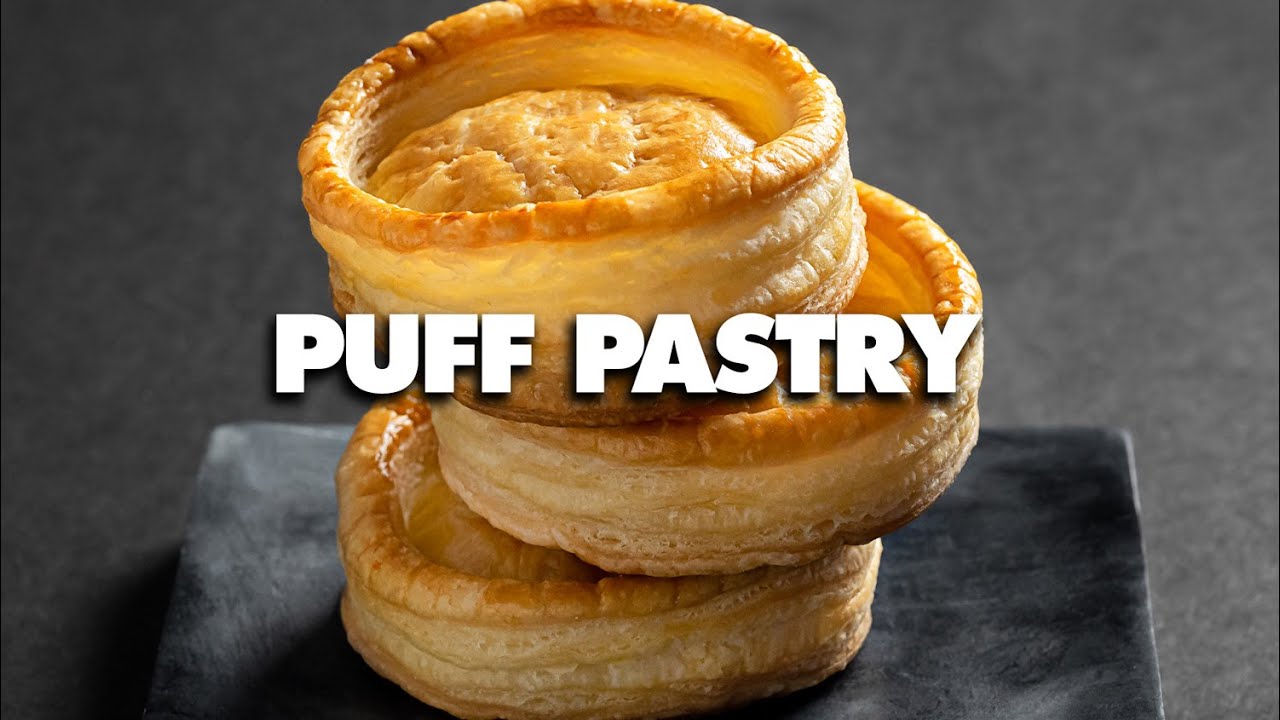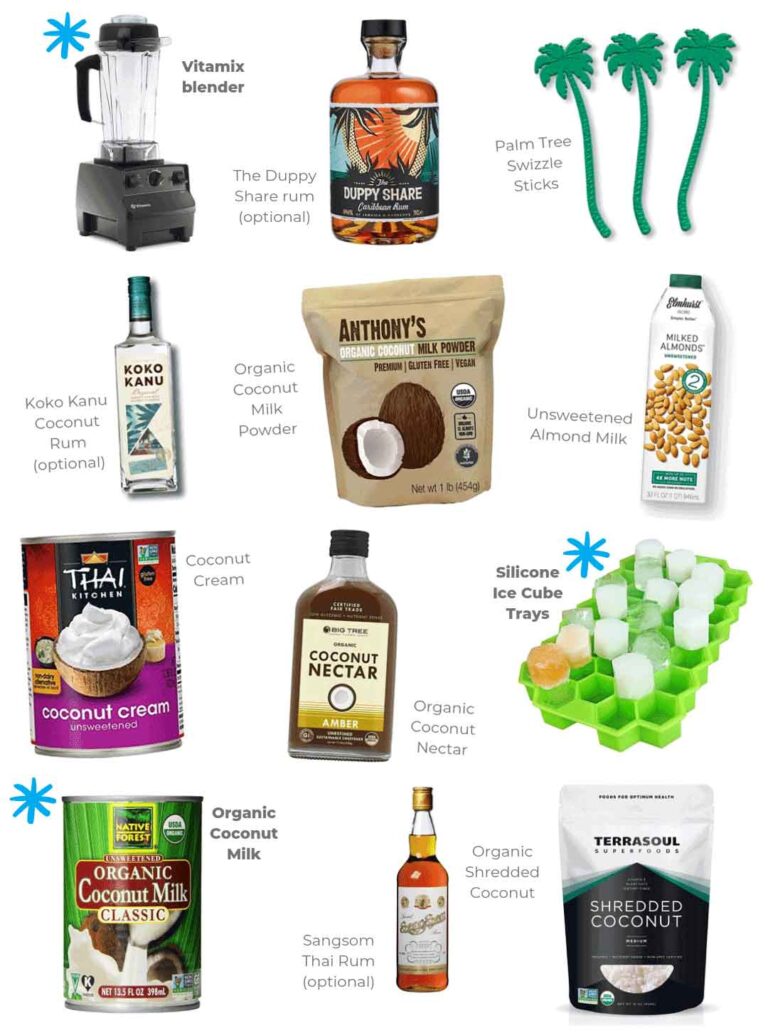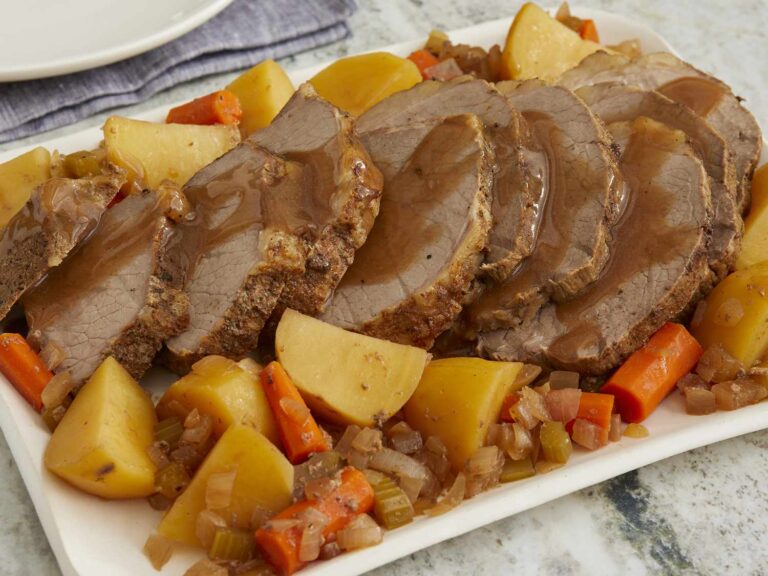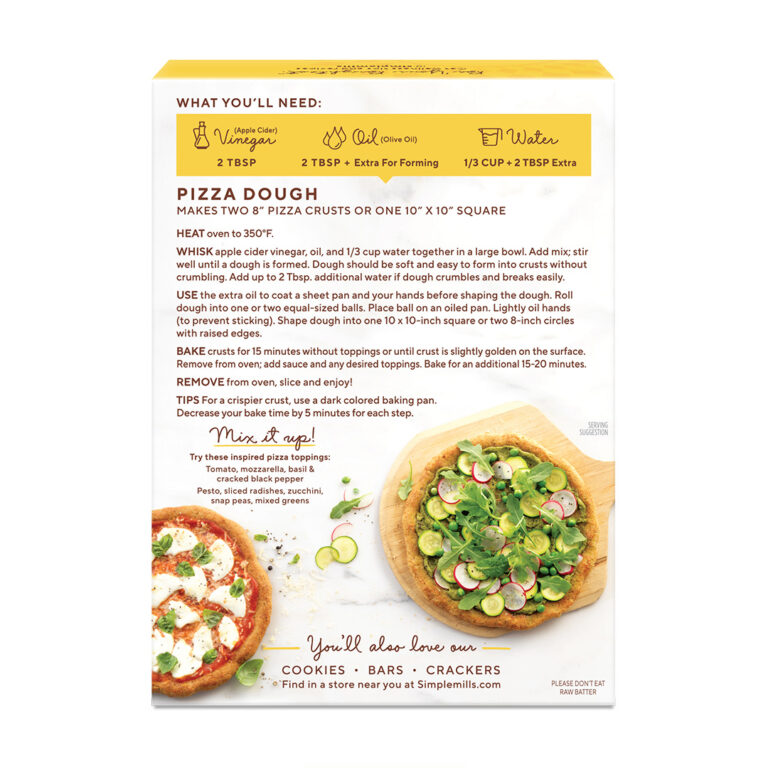French Puff Pastry Recipe: Master the Art of Flaky Perfection
French puff pastry is a delight to make and eat. It’s flaky, buttery, and perfect for many dishes.
Creating a French puff pastry at home might seem challenging, but it is worth the effort. This recipe transforms simple ingredients into a layered and crispy masterpiece. Perfect for savory or sweet creations, puff pastry elevates any dish. Whether you’re a seasoned baker or a curious beginner, this recipe guides you through each step.
You’ll learn how to fold and roll the dough to achieve those delicate, airy layers. Get ready to impress your family and friends with this classic French pastry. Your kitchen will fill with the irresistible aroma of fresh, homemade puff pastry. Dive into this culinary adventure and discover the joy of baking French puff pastry from scratch!

Credit: www.spatuladesserts.com
Introduction To Puff Pastry
Puff pastry is a versatile and delicious dough. It is known for its light, flaky texture. Creating puff pastry is an art. It requires layering butter and dough. The result is a delicate and airy pastry. It is perfect for both sweet and savory dishes.
Origins Of Puff Pastry
The origins of puff pastry date back to the 17th century. It is believed to have been created by French bakers. They wanted to develop a new kind of dough. The idea was to incorporate layers of butter within the dough. The heat from the oven causes the layers to separate. This creates the characteristic flaky texture.
Uses In French Cuisine
Puff pastry is a staple in French cuisine. It is used in a variety of dishes:
- Croissants: These are perhaps the most famous use of puff pastry. They are buttery and flaky.
- Vol-au-vents: These are small, hollow cases filled with savory ingredients like mushrooms or seafood.
- Napoleons: These are layered desserts with pastry cream or whipped cream.
- Palmiers: These are sweet, crispy cookies shaped like hearts.
Puff pastry is also used in many savory recipes. It can be wrapped around meats or vegetables. It can also be used as a base for tarts and pies. The possibilities are endless!
Ingredients And Tools
Creating the perfect French puff pastry requires attention to detail. The ingredients and tools you use can make a big difference. This section will guide you through the essentials needed for a successful puff pastry.
Essential Ingredients
The key to a great puff pastry is using high-quality ingredients. You will need all-purpose flour for the dough. Choose unsalted butter for its pure taste. Cold water is vital to keep the dough firm. A pinch of salt enhances the flavor. Some recipes also suggest a bit of lemon juice.
Make sure to measure your ingredients accurately. Precision ensures the dough rises well. Use fresh butter and keep it cold. Cold butter creates the layers in the pastry. Cold water also helps maintain the dough’s consistency.
Recommended Tools
The right tools make the process easier. A rolling pin is essential to flatten the dough. A pastry brush helps you apply butter evenly. Use a sharp knife to trim the edges. This keeps the layers even and neat.
A baking sheet is needed for the final baking. Parchment paper prevents sticking and makes cleanup easier. A ruler can help you measure the dough precisely. These tools help you achieve a professional result.
Preparing The Dough
Creating the perfect puff pastry starts with preparing the dough. This step is crucial for achieving those flaky layers. It’s a process that requires patience and precision. Let’s dive into the details.
Mixing The Ingredients
Begin by measuring your flour and salt. Use a large mixing bowl. Add the flour and salt together. Mix them well. This ensures even distribution. Next, cut cold butter into small pieces. Add these to the flour mixture. Use your fingers or a pastry cutter. Work quickly to avoid melting the butter.
Once the butter is mixed, slowly add cold water. Do this a little at a time. Mix until the dough comes together. It should be slightly sticky but not wet. Avoid overworking the dough. This keeps the butter cold and intact. Cold butter is key to flaky pastry.
Resting The Dough
Once the dough is mixed, shape it into a ball. Wrap it in plastic wrap. Place it in the fridge. Let it rest for at least 30 minutes. This resting time is essential. It allows the gluten to relax. This makes rolling out the dough easier. Resting also keeps the butter cold.
After resting, the dough is ready for the next steps. Keep it cold and work quickly. This ensures the best results for your puff pastry.
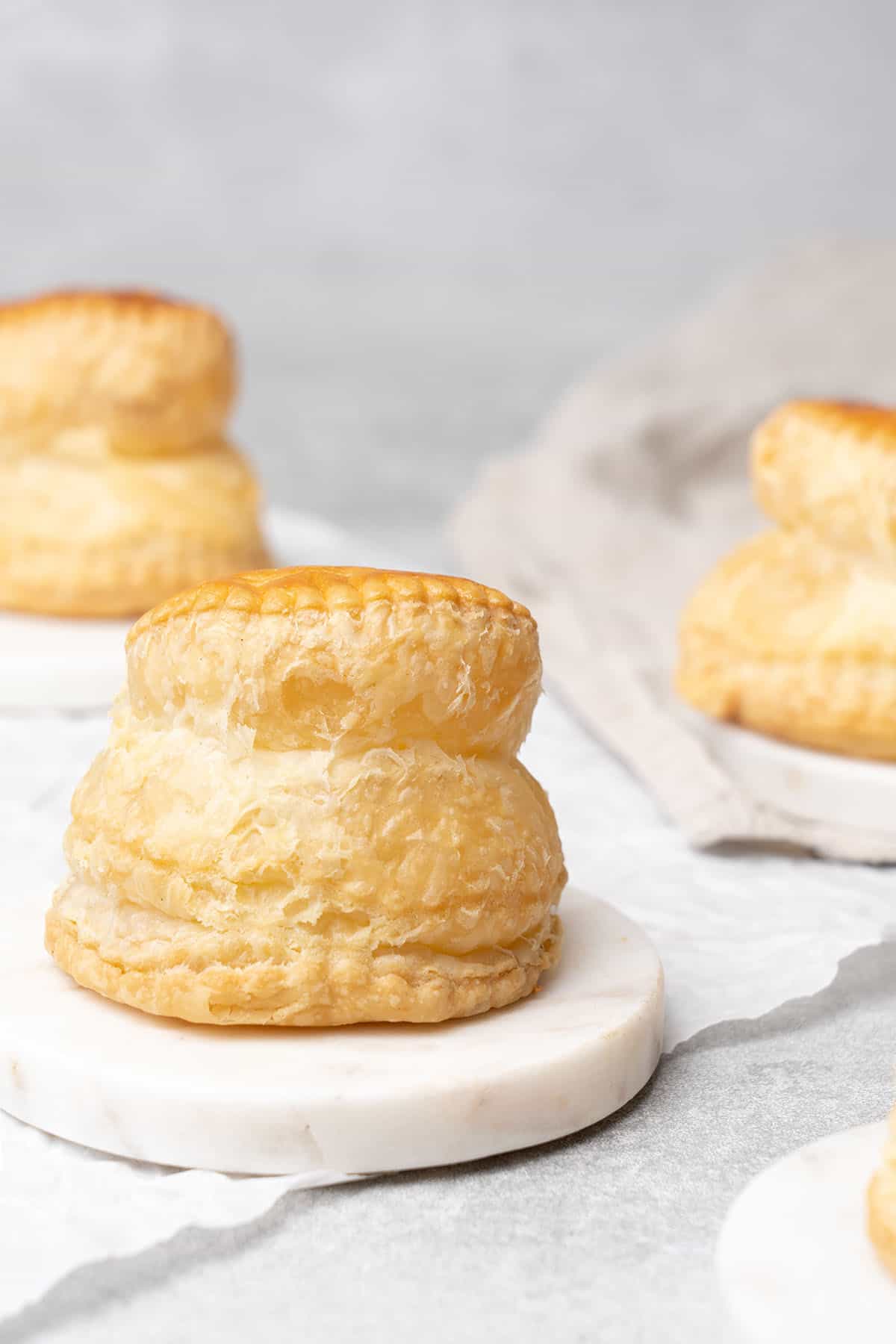
Credit: www.spatuladesserts.com
Rolling And Folding Techniques
Rolling and folding techniques are essential in making French puff pastry. These techniques help create the many layers in the dough. Properly executed, they result in a light, flaky texture. This section will guide you through these techniques.
Creating Layers
Start by rolling out your dough into a rectangle. The dough should be smooth and even. Next, place a block of chilled butter in the center. Fold the dough over the butter, sealing the edges. This step is crucial for creating distinct layers.
After sealing the butter, roll the dough out again. Aim for an even thickness. The goal is to distribute the butter evenly. This process forms the basis of the layers. Repeat this step several times.
Proper Folding Methods
There are different folding techniques. The most common is the book fold. Fold the dough into thirds, like a letter. Another method is the double fold. Fold both edges towards the center, then fold in half. These methods help create many layers.
After each fold, chill the dough. This keeps the butter from melting. Cold dough is easier to roll and fold. Repeat the rolling and folding steps multiple times. This ensures a flaky texture.
Both methods require patience and precision. Each fold adds more layers. The more layers, the flakier the pastry. Practice these techniques for the best results.
Chilling And Resting
Chilling and resting the dough are crucial steps in making a perfect French puff pastry. These steps help maintain the structure and texture of the layers. Skipping this process can lead to a flat and dense pastry. Let’s explore why chilling and resting are so important.
Importance Of Chilling
Chilling the dough helps keep the butter cold. This is essential for creating distinct layers in the puff pastry. Cold butter releases steam when baked, making the pastry rise and become flaky. If the dough is too warm, the butter will melt into the dough, losing the layers.
Chilling also makes the dough easier to handle. A well-chilled dough is firm and less sticky. This prevents the dough from tearing during rolling and folding. It ensures each layer is even and smooth, which is key to the pastry’s texture.
Timing And Patience
Timing is everything in puff pastry. The dough needs to chill for at least 30 minutes between each fold. This allows the gluten to relax, preventing the dough from shrinking during baking. It also keeps the butter and dough at the same temperature.
Resting the dough overnight is even better. A longer rest allows the flavors to develop. It also makes the dough more pliable and easier to roll out. Patience is key; rushing this step can ruin the entire pastry.
| Step | Minimum Time | Ideal Time |
|---|---|---|
| Chilling between folds | 30 minutes | 1 hour |
| Final rest | 4 hours | Overnight |
In summary, chilling and resting your puff pastry dough are non-negotiable steps for success. They ensure the dough is easy to work with and bakes to a crispy, flaky perfection.
Baking Tips
Baking French puff pastry can be tricky. But with the right tips, it becomes easier. The key lies in precision and patience. Let’s explore some essential baking tips.
Oven Temperature
Set the oven to the correct temperature. High heat is crucial. It helps the dough puff up properly. Preheat the oven to 400°F (200°C). This ensures even baking.
Don’t open the oven door often. This can cause a drop in temperature. Consistent heat is vital for the perfect rise.
Monitoring Progress
Keep an eye on the pastry. Watch for a golden brown color. This indicates it’s almost ready. Check the layers. They should be flaky and well-separated.
Use a timer. It helps you stay on track. Set it for 15 minutes first. Then check the progress. Adjust the time if needed.
If the pastry browns too quickly, lower the heat slightly. This prevents burning.
Common Mistakes To Avoid
Making French puff pastry can be tricky. Even small mistakes can ruin the dough. To help, we will discuss common mistakes to avoid. This will ensure your pastry turns out perfect.
Overworking The Dough
Overworking the dough is a common error. Puff pastry needs gentle handling. Too much kneading makes the dough tough. It loses the light and flaky texture. Always handle the dough with care.
Rest the dough between folds. This keeps the butter from melting. It also allows the gluten to relax. Overworking can also cause shrinkage during baking. Remember, less is more.
Incorrect Temperature
Temperature control is vital. The butter must stay solid. Cold butter creates layers in the dough. If the butter melts, you lose those layers. Always chill the dough after each fold.
Keep your kitchen cool. Warm environments can soften the butter. This can ruin the dough. Use a thermometer for accuracy. Ensure your oven is hot when baking. This helps the pastry rise properly.
Delicious Variations
French puff pastry is a versatile and delightful treat. You can use it for both sweet and savory recipes. Here, we explore some delicious variations to try at home.
Sweet Pastry Ideas
Sweet puff pastries are perfect for dessert lovers. They can be filled with various ingredients to satisfy your sweet tooth.
- Chocolate Croissants: Fill the pastry with chocolate. Bake until golden brown. Enjoy with a cup of coffee.
- Fruit Turnovers: Use fresh fruits like apples, berries, or peaches. Mix with a bit of sugar. Wrap the fruits in the pastry and bake.
- Cinnamon Rolls: Spread butter, sugar, and cinnamon on the pastry. Roll it up, slice, and bake. Drizzle with icing.
Savory Pastry Ideas
Savory puff pastries make great appetizers or main dishes. They are versatile and can be filled with various ingredients.
- Cheese and Herb Puffs: Combine cheese and herbs. Fill the pastry and bake. Perfect for a snack.
- Spinach and Feta Triangles: Mix spinach, feta cheese, and seasonings. Wrap in the pastry and bake until crispy.
- Sausage Rolls: Fill the pastry with sausage meat. Roll up, slice, and bake. Serve with mustard.
Serving Suggestions
French puff pastry is a versatile delight. Its flaky, buttery layers make it perfect for any occasion. Whether you enjoy it as a dessert or a snack, there are many ways to serve it.
Pairing With Beverages
Pair your puff pastry with a hot cup of coffee. The strong, rich flavor of coffee complements the pastry’s buttery taste. For a lighter option, try a cup of tea. Herbal teas like chamomile or peppermint offer a refreshing contrast.
If you prefer cold drinks, consider a glass of iced tea. The subtle sweetness of iced tea balances the pastry’s richness. For a more festive feel, serve with sparkling water. Its crispness pairs well with the delicate pastry.
Presentation Tips
Presentation matters, even for something as simple as puff pastry. Use a clean, white plate to make the pastry the star. Arrange the pieces neatly. This makes the dish look more appealing.
Add a dusting of powdered sugar for a touch of elegance. Fresh berries or a sprig of mint can add color and a fresh taste. Serve with small forks or dessert spoons to make it easy to eat.
Consider using a tiered serving tray for a dramatic effect. This is especially useful for parties or gatherings. The different levels add height and interest to your table.
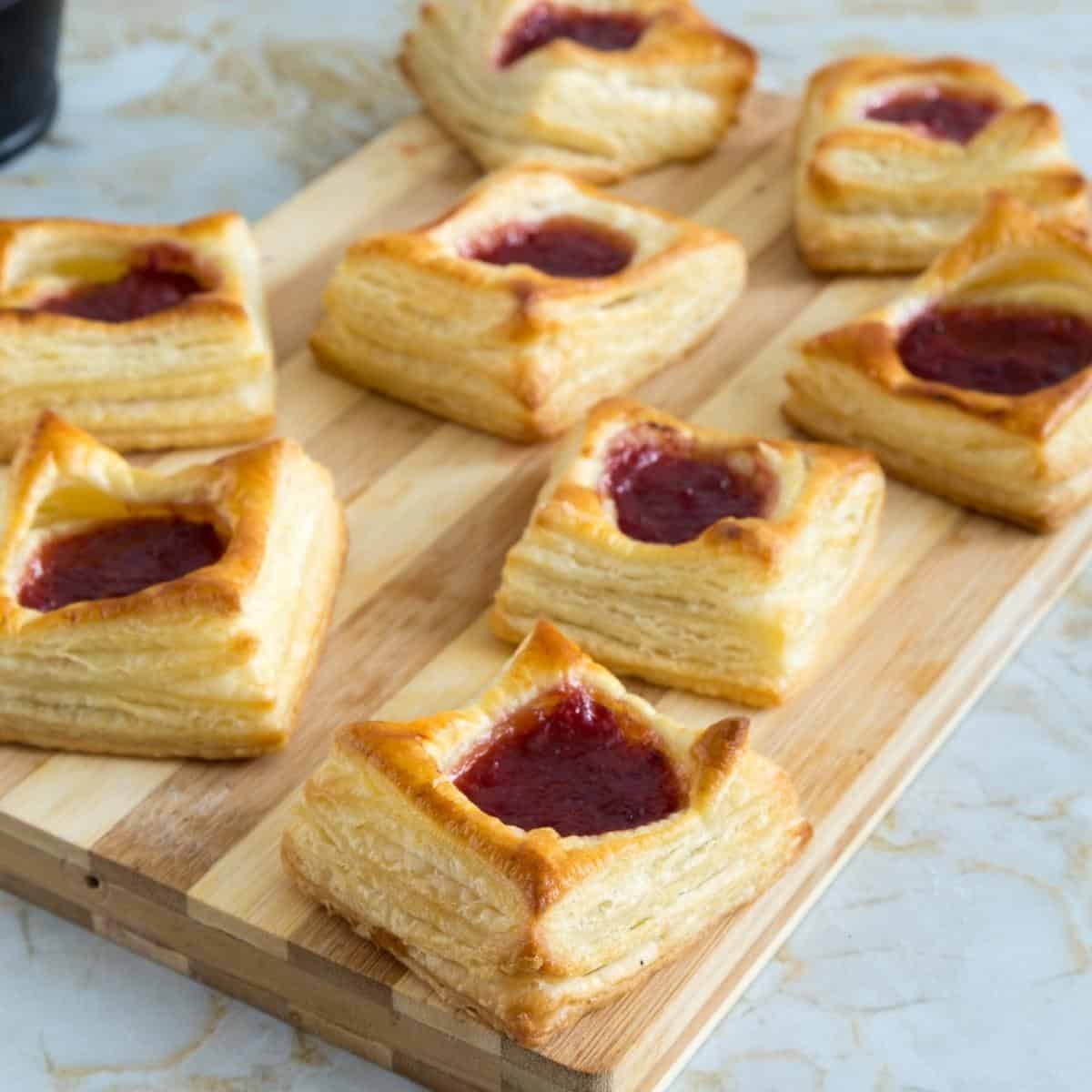
Credit: veenaazmanov.com
Frequently Asked Questions
What Is French Puff Pastry?
French puff pastry is a light, flaky dough made from layers of butter and dough. It’s used in various pastries and savory dishes.
How Do You Make Puff Pastry From Scratch?
To make puff pastry from scratch, you need flour, butter, water, and salt. Fold and roll the dough multiple times to create layers.
Can Puff Pastry Be Made Ahead?
Yes, puff pastry can be made ahead. Store it in the refrigerator for up to 3 days or freeze for longer storage.
What Recipes Use Puff Pastry?
Puff pastry is used in recipes like croissants, tarts, turnovers, and savory pies. It’s versatile for both sweet and savory dishes.
Conclusion
Creating French puff pastry at home is rewarding and fun. The process may seem complex, but it’s worth the effort. Fresh, flaky layers make your pastries special. Practice makes perfect, so don’t give up. Enjoy the delightful results with family and friends.
Happy baking!

